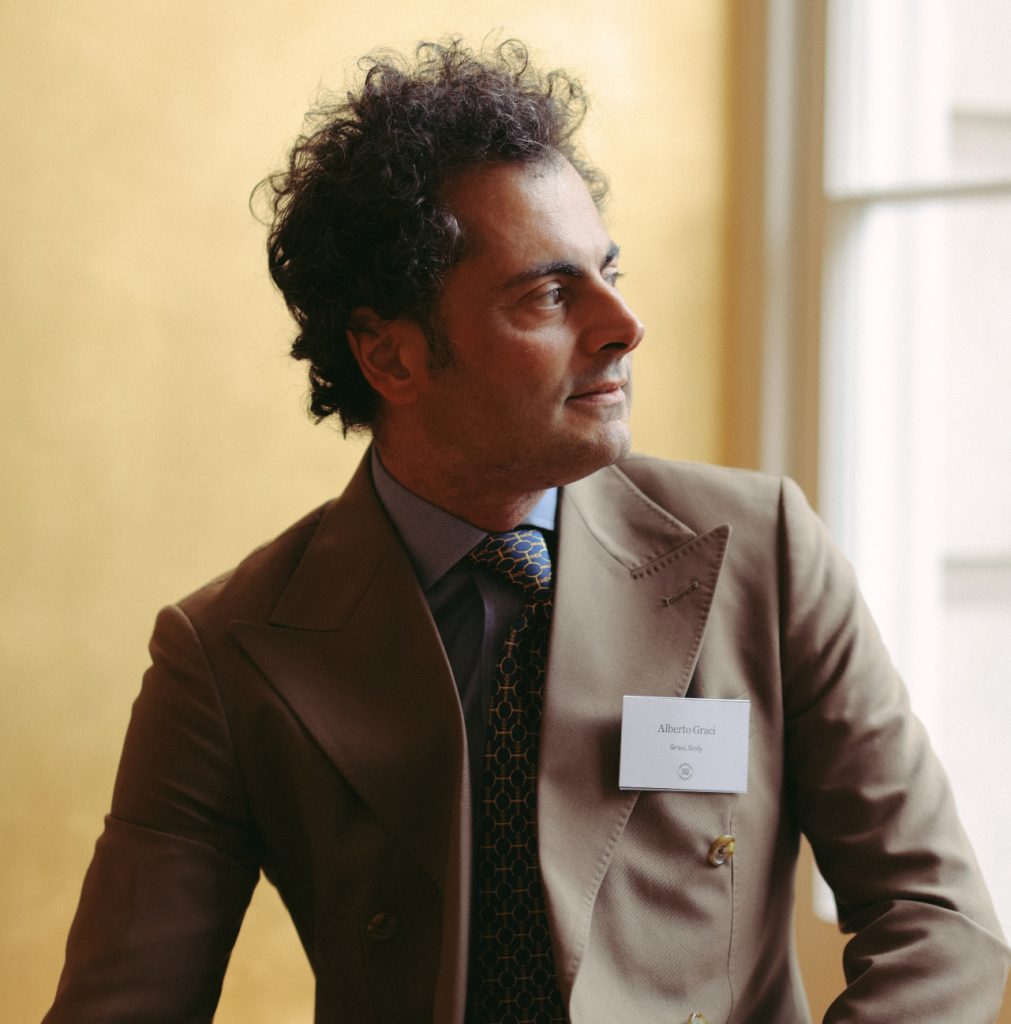Graci: finding an equilibrium on Etna
Author: Elisa De Luca

Etna is an astoundingly unique winemaking region, subject to extremities of climate found nowhere else in the world. Yet – as Alberto Graci explained at our inaugural Sustainability Forum last week – these challenges don’t discourage winemakers here from efforts to protect the environment; rather, they encourage them.
A volcano needs to erupt just once every 10,000 years to be classified as active.
For the winemakers who spend their days tending the vines on the slopes of Mount Etna in Sicily, this figure seems laughable. Here, eruptions are a little more frequent; Etna sees between 50 and 60 on average per year. Every one of these is classified as explosive: the most violent type of eruption.
“It means that our soils are contemporary,” says Alberto Graci, speaking to a room of leading winemakers and industry figures at the first Berry Bros. & Rudd Sustainability Forum, held in London last week. Each eruption imparts fresh volcanic matter into the soils – which in itself is not a negative thing. As Alberto says, “You can imagine the energy in them.”
The climate of Etna
While these soils are certainly unique, so too are many other aspects of this remarkable terroir. For one, the temperatures. Sitting at the southernmost point of Italy, Sicily is subject to incredibly hot, long days of summer sunshine. Currents and winds from Africa – notably, the Sirocco from the Sahara – contribute to the heat, and rainfall is scarce.
Winemakers combat this by taking to the mountain slopes. Altitude provides the sun-baked vines with cooling relief, but comes with its own range of challenges: the risk of heavy snowfall during winter, bitterly cold temperatures throughout the year – and of course, the risks of lava, smoke and fire from those ever-present eruptions.
Yet, the winemakers of Sicily take this in their stride. “We’re used to extreme natural events,” says Alberto. In fact, he takes inspiration from these challenges. “Etna is like a very interesting laboratory that we can study – it teaches us how to adapt, how disturbances can be an inspiration.”
Climate change is just another hurdle to overcome, he explains to the room. “Etna teaches us how we can find a new, stable dimension in the face of environmental change.”
“Humility and sacrifice”
Sicily, like many winemaking regions in Italy, has humble roots. For centuries, poor farming communities worked the land here. Many of their traditions and attitudes remain today.
“There was always humility in the farmers’ approach,” explains Alberto. “They understood the harmony of the system, they knew that you have to connect with it. Every small thing – where we live, and what we do – it makes a portrait. Every leaf is part of a tree, and every tree part of a forest. Even if you’re just a leaf, you have to think about the whole forest.”
It’s understandable that Etna’s winemakers accept this humility as sacrosanct. Trying to tame an extremely active volcano would be nothing short of madness; winemakers accepting their status in Etna’s ecosystems, and working within that, is all they can do. This leads Alberto to his second point about what is required for success in the region: sacrifice.
The concept of “thinking about the forest” means that Etna’s growers sometimes opt to take actions that, while limiting in the short term, have a wider positive impact long-term. As Alberto says: “If I talk about sustainability only in the terms of my estate – it doesn’t make sense.”
The Graci way
Based in Etna Rosso, the Graci estate is the birthplace of some delicious wines – from the deliciously pure Etna Bianco, Rosso and Rosato, to single-vineyard specialties.
One of the key “sacrifices” the team here is making revolves around the planting of trees. “For every hectare of vineyard I have, I plant four hectares of wood,” Alberto says. “Trees force us to sacrifice in the medium term. But, they protect smaller plants and animals, and they’re good for birds – this sacrifice creates value.”
Have they made a noticeable difference? “In some vineyards, we didn’t plant trees around them,” Alberto explains. “Those vineyards were a disaster. The trees help maintain the structure of the soil.”
Terraces of walls also pepper the Graci vineyards. Despite taking up more valuable vine space, Alberto says they’re essential. One kilometre of wall has been built for every half hectare of vineyard, and their impact is easily recognisable, helping winemakers to farm extremely steep slopes, and preventing the erosion of those energetic, highly important volcanic soils.
The future for Etna
As can be expected from such a challenging environment, Sicily’s growers tend to rely on, rather than compete with, each other. This way of working has been common in Sicily for generations. “It’s a very traditional way,” Alberto says. “It’s what happened in the past.”
Working more sustainably is a constant topic of discussion, and there are pushes to get everyone moving in tandem.
“We’re trying to convince other producers to organise themselves sustainably,” Alberto says. “We want them to embrace sustainable practices. And this isn’t just wineries – this is all other agricultural producers, too.”
A key movement is beginning; as Alberto explains: larger wineries with the capacity to economically support others are setting up ways for everyone to monitor, and manage, sustainable practices. “It’s nice to say sustainability, but it’s also important to measure that,” he continues.
While climate change is causing concerns across the globe, Sicily seems – in some ways, at least – better prepared than other regions. Particularly when you consider that rising temperatures and drier summers are being added onto voracious volcanic activity.
But, Alberto is positive that Graci – and others in Sicily – will overcome everything. After all – as he says, with a smile: “The future is what we make it.”
Discover more about Graci here.


